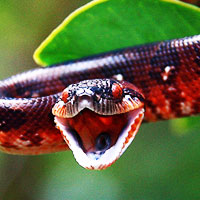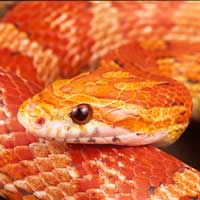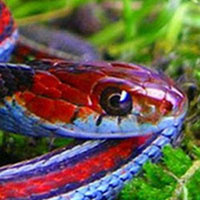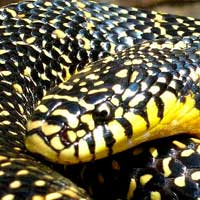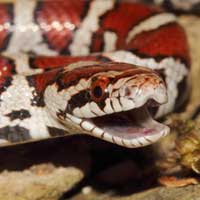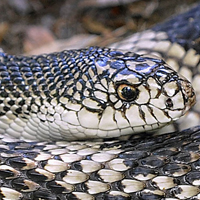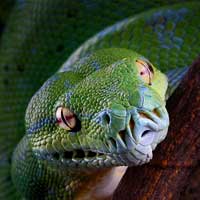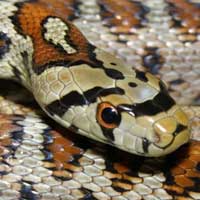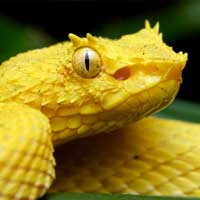The Fascinating World of the Pacific Tree Boa: A Complete Guide
The Pacific Tree Boa is scientifically named Candoia bibroni. It belongs to the Boidae family, which includes non-venomous constrictor snakes.
Scientific Name: Candoia bibroni
Snake Family: Boidae
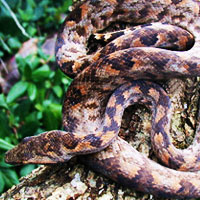
Pacific Tree Boa: An Introduction
The Pacific Tree Boa (Candoia bibroni) is a striking arboreal snake native to the Pacific Islands, including Fiji, the Solomon Islands, and New Guinea. Known for its adaptability and unique coloration, this non-venomous species thrives in tropical climates. The Pacific Tree Boa is popular among reptile enthusiasts for its manageable size and fascinating behavior. This guide explores its habitat, diet, temperament, and care needs.
Where Does the Pacific Tree Boa Live?
The Pacific Tree Boa is well-adapted to the lush environments of the Pacific Islands. Its arboreal nature means it prefers habitats with plenty of vegetation, where it can climb and hunt efficiently.
| Habitat Feature | Description |
|---|---|
| Geographic Range | Fiji, Solomon Islands, Papua New Guinea |
| Preferred Environment | Tropical forests with dense foliage |
| Climate | Warm and humid, with temperatures of 75-85°F |
Diet and Feeding of the Pacific Tree Boa
The Pacific Tree Boa is a carnivorous snake that primarily preys on small mammals, birds, and reptiles in the wild. Its diet in captivity should closely resemble its natural feeding habits.
- Juveniles: Feed on pinky mice or small lizards every 5-7 days.
- Adults: Feed on appropriately sized rodents or birds every 10-14 days.
- Prey Size: Ensure prey is no larger than the snake’s widest part to prevent regurgitation.
- Hydration: Provide fresh water for drinking and soaking.
Behavior and Temperament of the Pacific Tree Boa
The Pacific Tree Boa is known for its arboreal behavior and nocturnal activity patterns. While typically calm, their temperament can vary between individuals.
- Arboreal Lifestyle: Spends much of its time coiled on branches, waiting to ambush prey.
- Nocturnal Behavior: Most active during the night, using heat-sensing pits to locate prey.
- Defensive Tendencies: May hiss or strike if threatened, though generally docile with regular handling.
Ensuring the Health and Longevity of the Pacific Tree Boa
With proper care, the Pacific Tree Boa can live 15-20 years in captivity. Regular health checks and a well-maintained habitat are essential for their well-being.
| Health Issue | Symptoms | Prevention |
|---|---|---|
| Respiratory Infections | Wheezing, open-mouth breathing | Maintain proper humidity and temperature |
| Parasites | Visible mites, itching | Regular cleaning of enclosure |
| Dehydration | Wrinkled skin, lack of appetite | Ensure adequate hydration and humidity |
Reproductive Behavior of the Pacific Tree Boa
The Pacific Tree Boa is ovoviviparous, giving birth to live young. Breeding them in captivity requires careful attention to environmental conditions.
- Mating Season: Late winter to early spring.
- Gestation Period: Approximately 6-8 months.
- Litter Size: Typically 5-12 young.
- Breeding Tips: Simulate seasonal changes with temperature drops to encourage mating behavior.
Handling and Care Tips for the Pacific Tree Boa
Caring for a Pacific Tree Boa requires a well-maintained enclosure and regular but gentle handling. Their specific environmental needs must be met to keep them healthy and stress-free.
- Provide an enclosure with vertical space, including branches for climbing.
- Maintain a temperature gradient of 75-85°F with high humidity levels (60-80%).
- Handle with care and limit interactions to avoid stress.
- Offer a diet tailored to the snake’s size and age.
- Clean the enclosure regularly and monitor for any health concerns.
